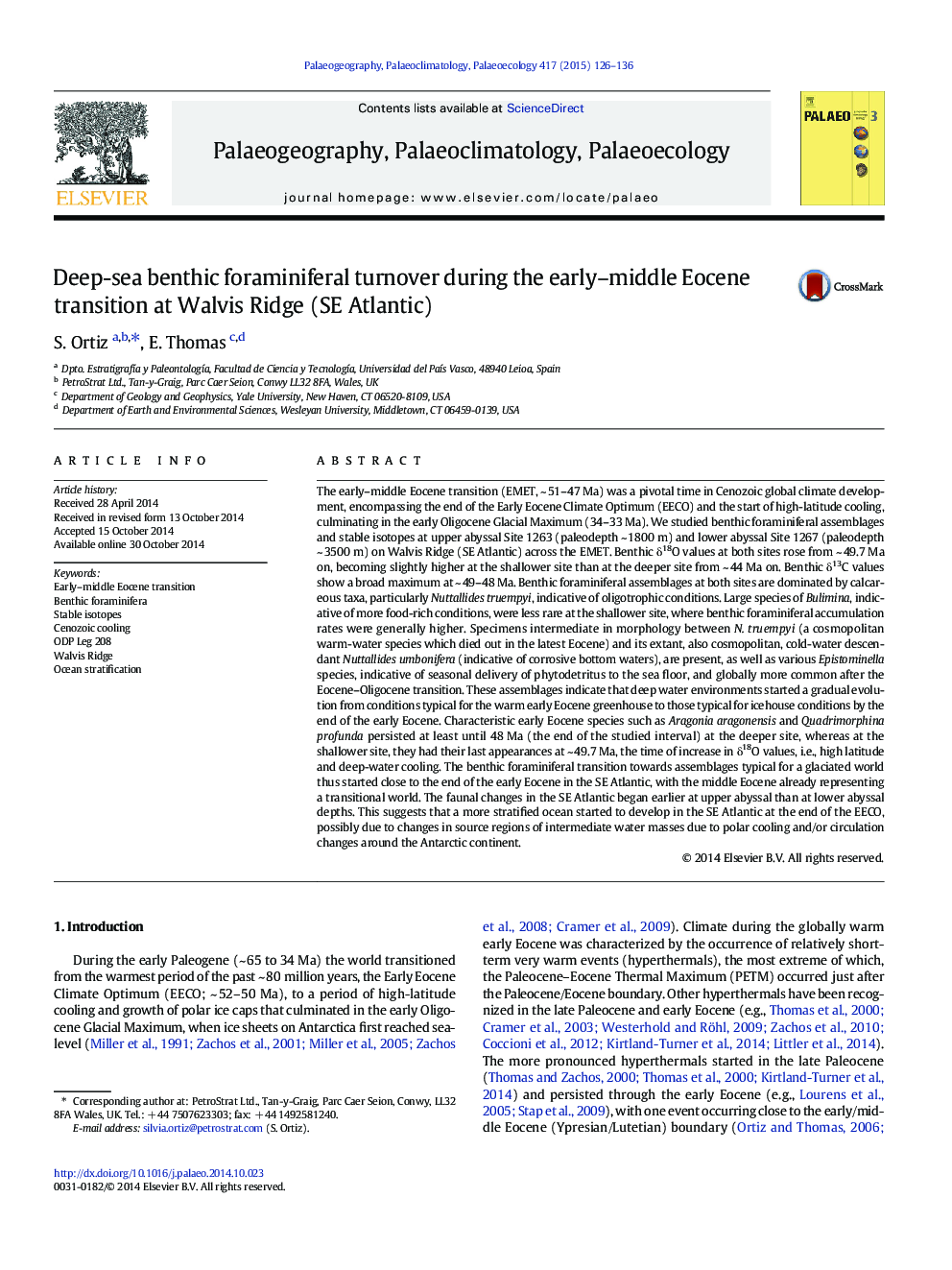| کد مقاله | کد نشریه | سال انتشار | مقاله انگلیسی | نسخه تمام متن |
|---|---|---|---|---|
| 6349851 | 1622173 | 2015 | 11 صفحه PDF | دانلود رایگان |

- Benthic foraminifera and stable isotope across early-middle Eocene in SE Atlantic
- Cenozoic, high-latitude cooling started at the end of the early Eocene, at ~Â 49.7Â Ma.
- Faunal effects earlier at upper than lower abyssal depth
- Development of a more stratified ocean at initiation of Cenozoic cooling
The early-middle Eocene transition (EMET, ~ 51-47 Ma) was a pivotal time in Cenozoic global climate development, encompassing the end of the Early Eocene Climate Optimum (EECO) and the start of high-latitude cooling, culminating in the early Oligocene Glacial Maximum (34-33 Ma). We studied benthic foraminiferal assemblages and stable isotopes at upper abyssal Site 1263 (paleodepth ~ 1800 m) and lower abyssal Site 1267 (paleodepth ~ 3500 m) on Walvis Ridge (SE Atlantic) across the EMET. Benthic δ18O values at both sites rose from ~ 49.7 Ma on, becoming slightly higher at the shallower site than at the deeper site from ~ 44 Ma on. Benthic δ13C values show a broad maximum at ~ 49-48 Ma. Benthic foraminiferal assemblages at both sites are dominated by calcareous taxa, particularly Nuttallides truempyi, indicative of oligotrophic conditions. Large species of Bulimina, indicative of more food-rich conditions, were less rare at the shallower site, where benthic foraminiferal accumulation rates were generally higher. Specimens intermediate in morphology between N. truempyi (a cosmopolitan warm-water species which died out in the latest Eocene) and its extant, also cosmopolitan, cold-water descendant Nuttallides umbonifera (indicative of corrosive bottom waters), are present, as well as various Epistominella species, indicative of seasonal delivery of phytodetritus to the sea floor, and globally more common after the Eocene-Oligocene transition. These assemblages indicate that deep water environments started a gradual evolution from conditions typical for the warm early Eocene greenhouse to those typical for icehouse conditions by the end of the early Eocene. Characteristic early Eocene species such as Aragonia aragonensis and Quadrimorphina profunda persisted at least until 48 Ma (the end of the studied interval) at the deeper site, whereas at the shallower site, they had their last appearances at ~ 49.7 Ma, the time of increase in δ18O values, i.e., high latitude and deep-water cooling. The benthic foraminiferal transition towards assemblages typical for a glaciated world thus started close to the end of the early Eocene in the SE Atlantic, with the middle Eocene already representing a transitional world. The faunal changes in the SE Atlantic began earlier at upper abyssal than at lower abyssal depths. This suggests that a more stratified ocean started to develop in the SE Atlantic at the end of the EECO, possibly due to changes in source regions of intermediate water masses due to polar cooling and/or circulation changes around the Antarctic continent.
Journal: Palaeogeography, Palaeoclimatology, Palaeoecology - Volume 417, 1 January 2015, Pages 126-136